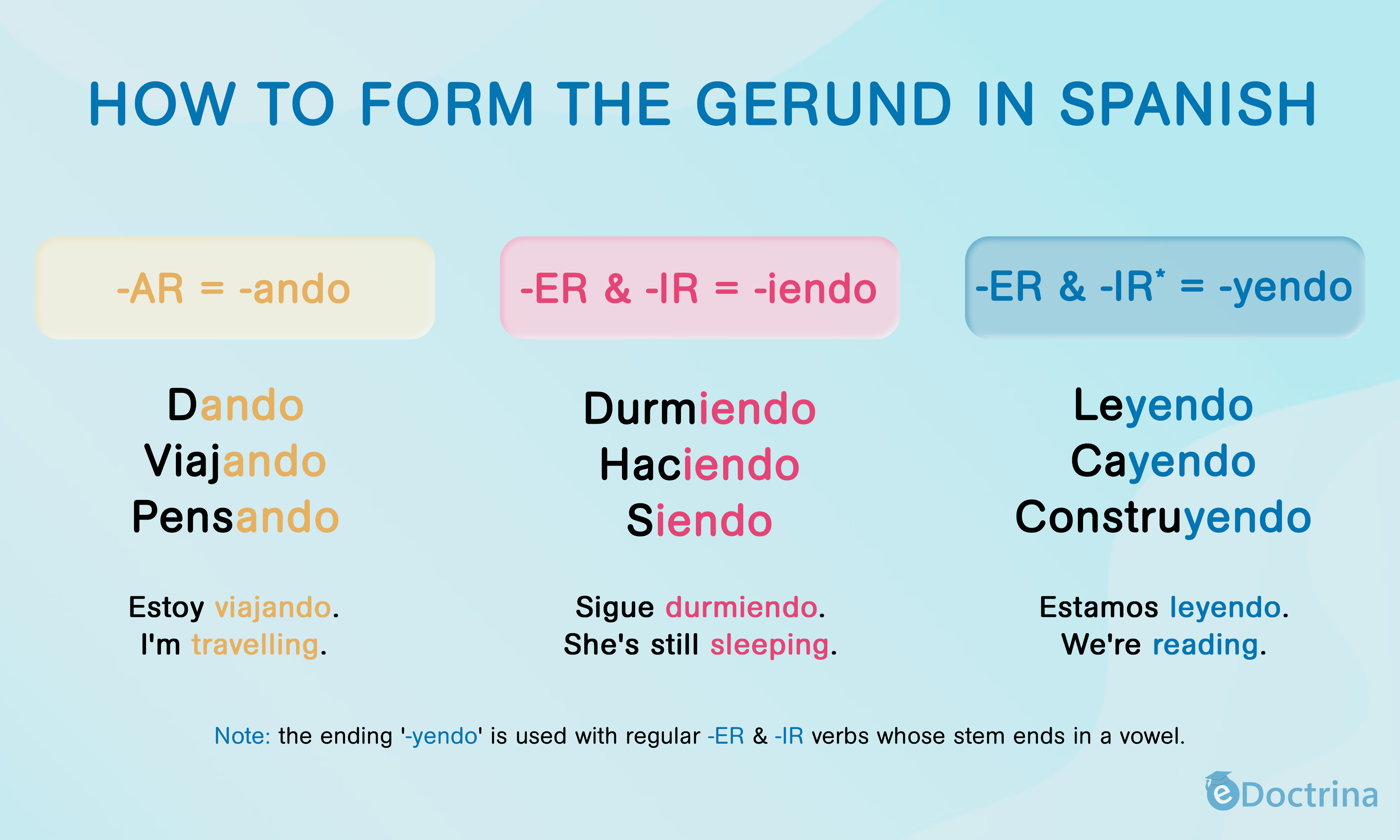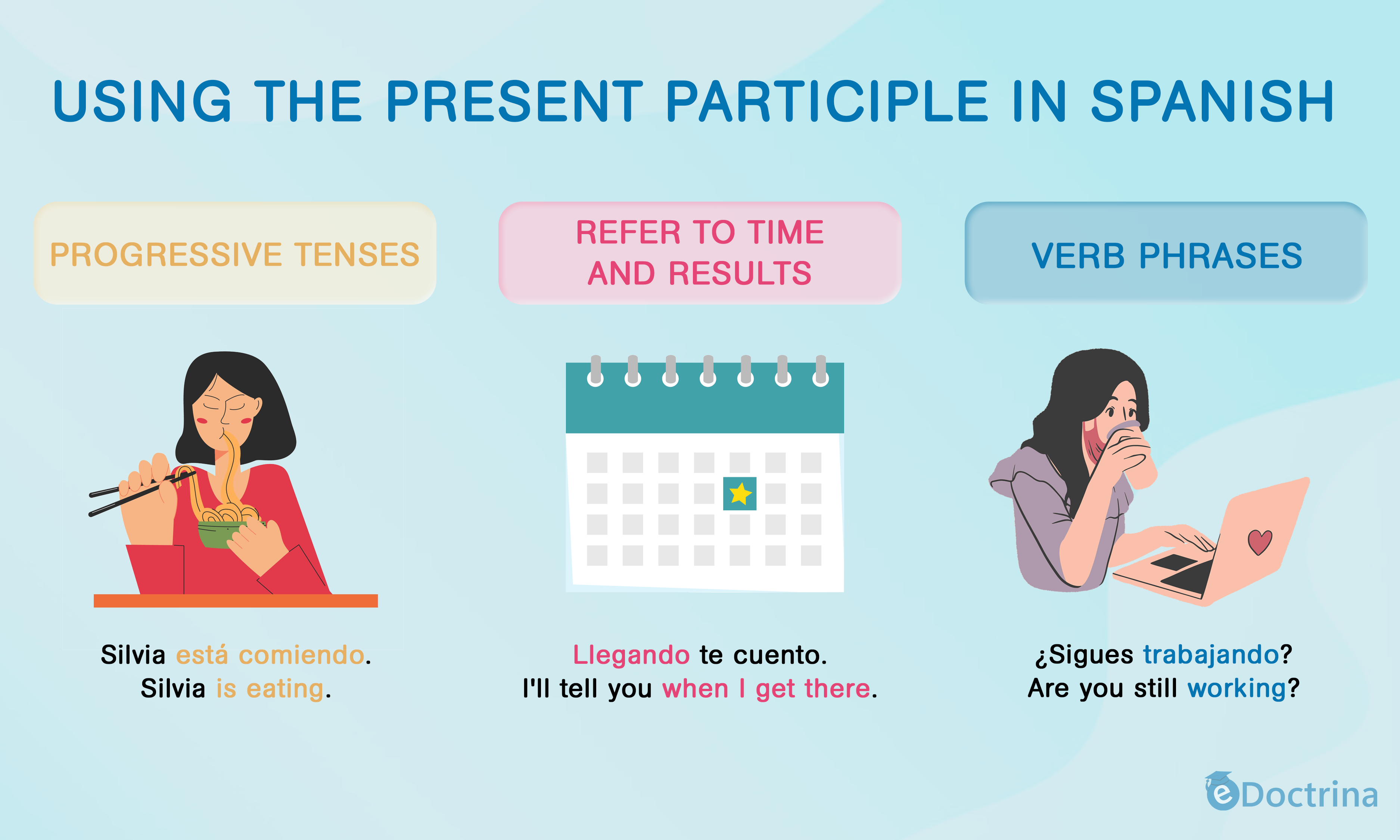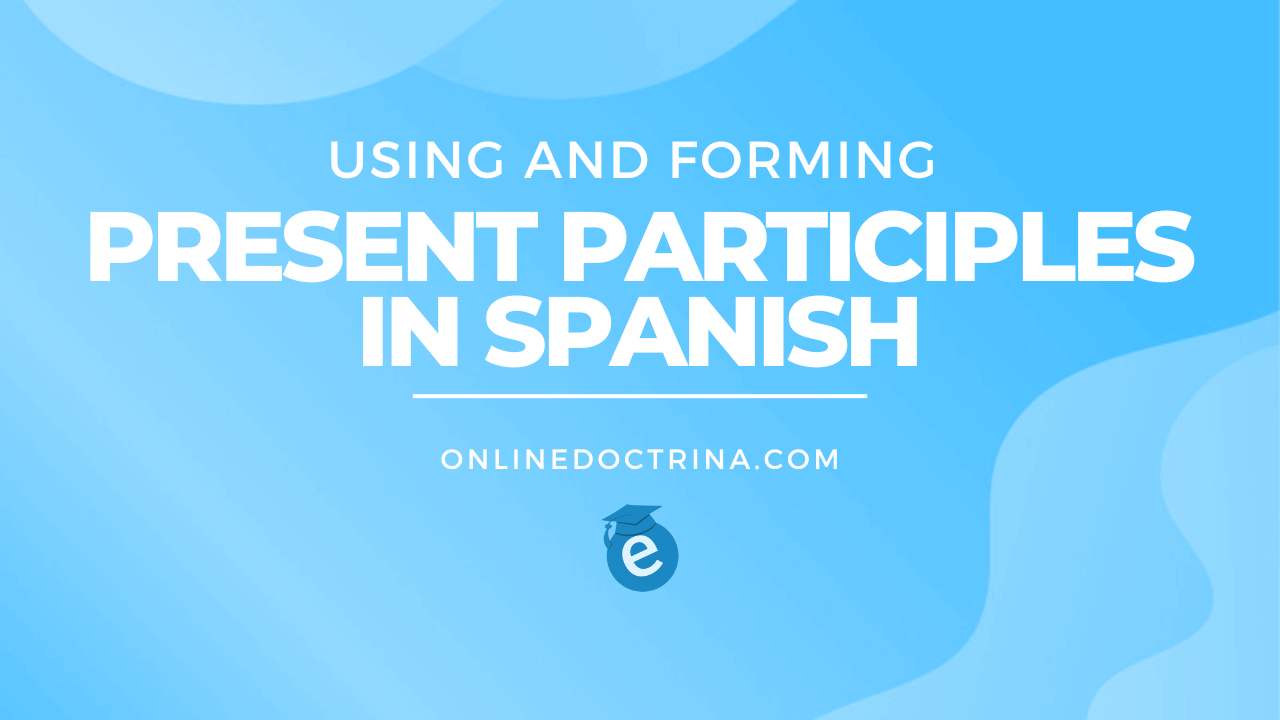The present participle in Spanish plays a crucial role in discussing ongoing actions. In essence, the present participle, also known as the gerund, is utilized to construct progressive tenses and convey that an action is either happening at the moment of speaking or still ongoing.
As Spanish gerunds contribute significantly to enhancing language proficiency, this guide will explore how to both use and form these words. Here’s a brief overview of what we’ll cover:
Forming the Present Participle in Spanish: A Step-by-Step Guide
Spanish present participles adhere to two regular endings:
- –ando (for -AR verbs)
- –iendo (for -ER and -IR verbs)
In essence, to form present participles in Spanish, you simply remove the infinitive ending of the verb (-ar, -er, -ir) and attach the appropriate gerund ending.
Here are some examples of present participles:
| Type of Verb | Infinitive Verb | Spanish Present Participle | English |
|---|---|---|---|
| -AR | Hablar | Hablando | Talking |
| -ER | Hacer | Haciendo | Doing |
| -IR | Escribir | Escribiendo | Writing |
Reviewing the previous examples, you’ll notice that when the infinitive ending is removed, the stems of these verbs conclude with a consonant.
However, some verbs have a stem ending in a vowel. In such cases, to maintain consistent pronunciation, the present participle ending -yendo is used. Here are examples of verbs that employ this ending:
- Leer: leyendo
- Construir: construyendo
- Oír: oyendo
- Caer: cayendo
- Traer: trayendo

Kindly observe: Spanish gerunds serve as the counterparts to English verbs ending in -ing. However, there are instances where English -ing verbs might be translated as a Spanish infinitive. To delve deeper into this topic, refer to the section on when not to use gerunds.
Do you want to learn more?
Join the e-Doctrina Spanish community and learn basic Spanish communication in a carefully graded way for beginners.
Irregular gerunds and stem-changes
In Spanish, irregular present participles refer to verbs that undergo significant changes, such as:
- Poder – pudiendo
- Ir – yendo
When it comes to gerunds, it’s more common to encounter stem-changing verbs than irregular verbs. Among these verb forms, two types of stem changes exist, primarily affecting certain -IR verbs.
Type #1: O to U
- Morir: Muriendo
- Dormir: Durmiendo
Type #2: E to I
| Infinitive Verb | Spanish Present Participle |
|---|---|
| Advertir | Advirtiendo |
| Competir | Compitiendo |
| Conseguir | Consiguiendo |
| Consentir | Consintiendo |
| Convertir | Convirtiendo |
| Decir | Diciendo |
| Doler | Doliendo |
| Hervir | Hirviendo |
| Mentir | Mintiendo |
| Reír | Riendo |
| Repetir | Repitiendo |
| Seguir | Siguiendo |
| Sentir | Sintiendo |
| Sugerir | Sugiriendo |
Gerunds with Reflexive and Direct Object Pronouns
In Spanish, gerunds frequently interact with reflexive or direct object pronouns. In such cases, it’s crucial to ensure the correct placement of the pronoun. Reflexive and object pronouns can be positioned in two different ways when used with present participles. Both options are equally valid:
- Before the conjugated verb
Me estoy peinando.
I’m doing my hair.
¿Le estás marcando?
Are you calling her?
- Attached to the gerund
Estoy peinándome.
I’m doing my hair.
¿Está marcándole?
Are you calling her?
When attaching the pronoun, we alter the stress of the syllable. Consequently, an accent mark must be added. In these instances, your endings will appear as -ándo or –iéndo. For instance: ‘hablándole‘, ‘mintiéndole‘, ‘diciéndole‘, etc.
Using Spanish Present Participle Verbs: Guidelines and Timing
Now that you’ve mastered the formation of the present participle in Spanish, it’s time to delve into its usage and appropriate contexts.

Form present progressive tenses
In Spanish, gerunds are frequently employed in the construction estar + gerund. This structure forms the basis for progressive tenses, which denote actions occurring at the time of speaking.
[Estar conjugated] + [present participle]
Estoy comiendo chocolate.
I’m eating chocolate.
Laura estuvo limpiando toda la noche.
Laura was cleaning all night.
Kindly observe: Avoid conflating present and past participles. Present participles are utilized in constructing progressive tenses and are gender-neutral. Conversely, past participles function as adjectives or are employed in forming perfect tenses.
Expressing Time or Consequences
When used independently, gerunds can signify consequences or indicate the timing of an action. As these are advanced applications, translations may vary. Here are some examples:
Llegando te digo.
I’ll tell you when I arrive.
Juan vendió todos sus productos, superando sus objetivos de venta.
Juan sold all of his products, exceeding his sales target.
Constructing Verbal Phrases with Present Participles
“Estar + gerund” is likely the most familiar verb phrase for many Spanish learners. Nevertheless, there are other common structures with present participles worth familiarizing yourself with:
- “Seguir + gerund“: signifies that an action initiated in the past is ongoing.
- “Llevar + gerund“: indicates the duration of time someone has been engaged in an activity.
- “Ir + gerund“: suggests that an action is progressively unfolding.
Yo sigo trabajando aquí.
I’m still working here.
Letty lleva dos años viviendo aquí.
Letty has been living here for two years.
Espérame, ya voy llegando.
Just wait, I’m getting there.
Kindly observe: Spanish gerunds are impersonal verbal forms, emphasizing information about the action itself rather than the subject performing it or the timing of its occurrence.
Instances Where Gerunds Should Not Be Used in Spanish
In general, present participles function much like English gerunds (-ing verbs). However, there are instances where Spanish present participles cannot be used, and instead, a verb in its infinitive form must be employed:
- When functioning as nouns:
Correr es bueno para la salud.
Running is good for your health.
- After a preposition:
Me interesa aprender español.
I’m interested in learning Spanish.
- To discuss the immediate future:
Voy a volver mañana.
I’m coming back tomorrow.

Main Takeaways
Present participles in Spanish are integral to effective communication. Here are some key points to remember:
- Regular Spanish present participles are formed with the endings:
- -ando (for -ar verbs)
- -iendo (for -er and -ir verbs)
- -yendo (for regular -er and -ir verbs whose stem ends with a vowel, such as leyendo)
- Spanish gerunds are mostly equivalent to -ing verbs in English. However, gerunds in Spanish are never used:
- As nouns
- To discuss future actions
- After a preposition
- Reflexive and direct object pronouns (DOPs) can be positioned before the conjugated verb or attached to the gerund.
- Gerunds in Spanish are utilized to:
- Form progressive tenses
- Express consequences or provide temporary context
- Create verb phrases

